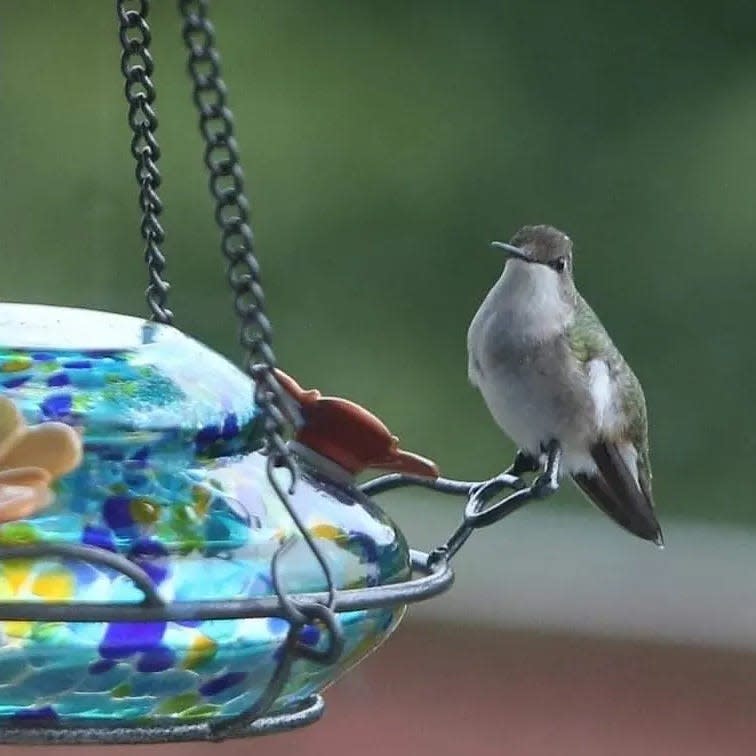Hummingbirds arrive in Hendersonville: Tips on how to keep them healthy, happy
Hummingbirds have made their way from the deep South to the mountains of Western North Carolina, so those who are hummingbird enthusiasts need to get those feeders ready.

Many Hendersonville residents have posted on social media about seeing the first hummingbirds of the season. Lutrelle O'Cain, who co-owns Wild Birds Unlimited, 638 Spartanburg Highway, told the Times-News on April 10 that hummingbirds will fly over a thousand miles to reach WNC.
"Every April after spending the winter in Mexico and Central America the Ruby Throated Hummingbirds return to Western North Carolina to enjoy our wonderful resources and to raise a family. ," O'Cain said. "They usually return to the same back yard they were born in."
More: Bullington Gardens celebrates 20 years, gears up for popular spring plant sale
O'Cain said keeping the hummingbird feeders filled with fresh, clean nectar is essential to keeping the hummingbirds healthy and happy, especially in the early weeks of April.
"Hungry and exhausted from their long migration, your feeder filled with fresh nectar will be a lifesaver and a very welcome sight. Keep in mind, when they arrive in early April, there is not much natural food for them, so they do depend on your feeders filled with nectar," she said.
She said her store has pre-made nectar, but that it can also be made with just plain sugar and water.
"Lots of our customers buy a prepared mix from us that includes a micronutrient to keep the nectar fresh much longer. Some of our customers prefer to make their own nectar. There is only one recipe for nectar, and this is plain white table sugar and boiled water. Mix one cup of sugar to four cups of water. That’s it. There is no need to add anything else to your nectar," she said.
Nutrelle said boiling water will help prevent mold from developing in the solution, and that unused nectar can be stored in the refrigerator or freezer.
Wild Birds Unlimited partners with Cornell University, which offers these fun facts about hummingbirds:
Ruby-throated Hummingbirds normally place their nest on a branch of a deciduous or coniferous tree; however, these birds are accustomed to human habitation and have been known to nest on loops of chain, wire, and extension cords.
Ruby-throated Hummingbirds are Eastern North America’s only breeding hummingbird. But in terms of area, this species occupies the largest breeding range of any North American hummingbird.
Male Ruby-throated Hummingbirds don’t stick around long. Pairs are together long enough for courtship and mating – just a matter of days to weeks. Then he’s off on his own, and may begin migration by early August.
Nest building and raising the young are entirely the female’s responsibility.
The oldest known Ruby-throated Hummingbird was a female, and at least 9 years, 2 months old when she was recaptured and rereleased in 2014 during banding operations in West Virginia.
Lutrelle said in addition to hummingbirds, another arrival to the area are bluebirds.
"We have our first batch of five bluebirds getting ready to hatch any day now," she said.
Dean Hensley is the news editor for the Hendersonville Times-News. Email him with tips, questions and comments at DHensley@gannett.com. Please help support this kind of local journalism with a subscription to the Hendersonville Times-News.
This article originally appeared on Hendersonville Times-News: WNC hummingbirds are here: How to keep them healthy, happy
